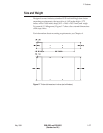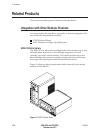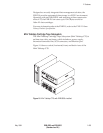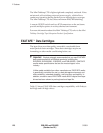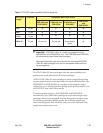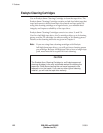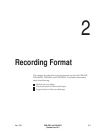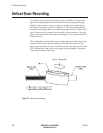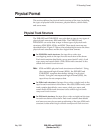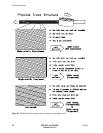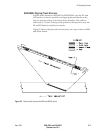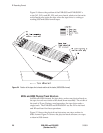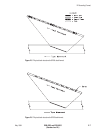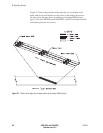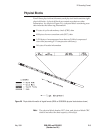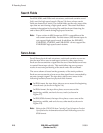
Physical Format
This section defines the physical track structure of the tape, including
the types of physical track structures, physical blocks, search fields,
and servo areas.
Physical Track Structure
The EXB-8205 and EXB-8205XL can write data to tape in two types of
physical track structures: 8200 and 8200c. The EXB-8505 and
EXB-8505XL can write data to tape in three types of physical track
structures: 8500/8500c, 8200c, and 8200. These track structures are
described below. Figure 2-2 shows the relationship between the three
physical track structures and the four logical data formats.
In 8500/8500c track structure,thetapedrivewritestwo
overlapping tracks to the tape for each revolution of the drum.
Each track contains data blocks, servo areas (track 2 only), clock
sync areas, and search fields. 8500/8500c track structure is also
called dual-azimuth track structure.
Note: 8500 and 8500c physical track structures are identical. Using
the compressed logical format (8500c), the EXB-8505 and
EXB-8505XL compress data before storing it in physical
blocks. Using the uncompressed logical format (8500), the
tape drives do not compress data.
In 8200c track structure, the tape drive writes a single track to the
tape for each revolution of the drum. Like 8500/8500c tracks, each
track contains data blocks, servo areas, clock sync areas, and
search fields. 8200c track structure is also called single-azimuth
compressed track structure.
In 8200 track structure, the tape drive writes a single track to tape
for each revolution of the drum. Each track contains data blocks
and one servo area for accurate positioning of the tape. 8200 track
structure is also called single-azimuth uncompressed track structure.
May 1994 EXB-8205 and EXB-8505 2-3
(Standard and XL)
2 Recording Format



